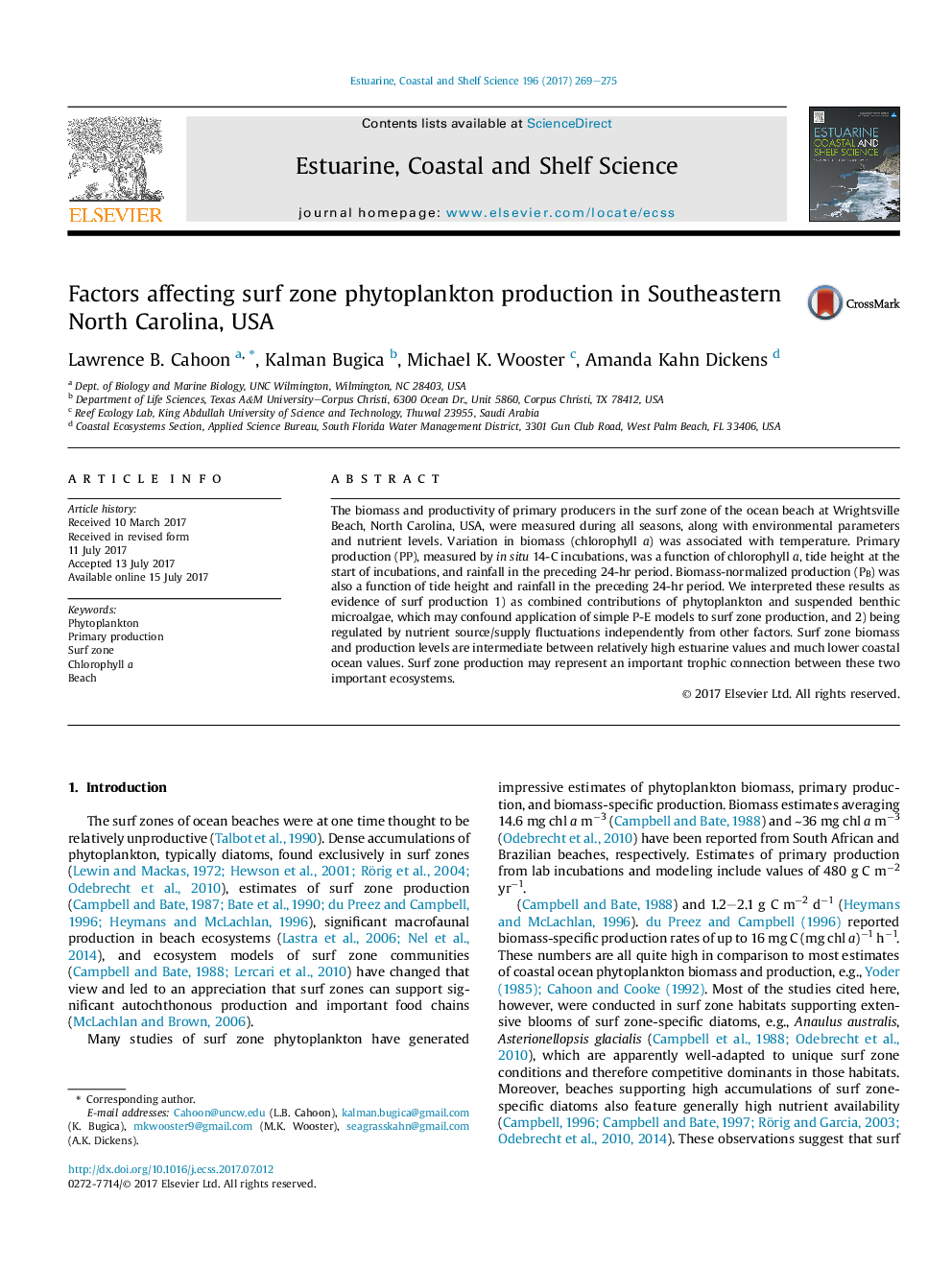| Article ID | Journal | Published Year | Pages | File Type |
|---|---|---|---|---|
| 5765142 | Estuarine, Coastal and Shelf Science | 2017 | 7 Pages |
The biomass and productivity of primary producers in the surf zone of the ocean beach at Wrightsville Beach, North Carolina, USA, were measured during all seasons, along with environmental parameters and nutrient levels. Variation in biomass (chlorophyll a) was associated with temperature. Primary production (PP), measured by in situ 14-C incubations, was a function of chlorophyll a, tide height at the start of incubations, and rainfall in the preceding 24-hr period. Biomass-normalized production (PB) was also a function of tide height and rainfall in the preceding 24-hr period. We interpreted these results as evidence of surf production 1) as combined contributions of phytoplankton and suspended benthic microalgae, which may confound application of simple P-E models to surf zone production, and 2) being regulated by nutrient source/supply fluctuations independently from other factors. Surf zone biomass and production levels are intermediate between relatively high estuarine values and much lower coastal ocean values. Surf zone production may represent an important trophic connection between these two important ecosystems.
Graphical abstractDownload high-res image (105KB)Download full-size image
